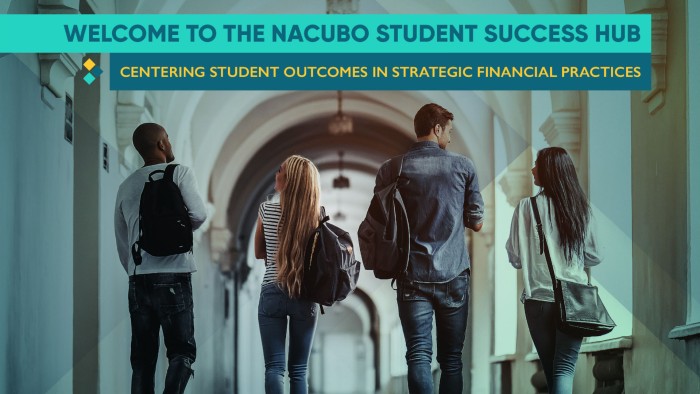
Helping Learners See a Clearer Path: Awareness Continues to Build Around Guided Pathways Framework
 The guided pathways framework is a whole-college redesign of the student experience. It helps learners explore, choose, plan, and complete programs aligned with their education and career goals. It can be especially helpful to learners from low-income backgrounds as it more clearly outlines their program with considerations to efficiency and affordability. The framework encourages and outlines changes in policies, practices, and systems to give learners a clear path to their education and career goals, including the support they need to stay on track. The framework also ensures students are building the essential skills needed for their career through their educational programs.
The guided pathways framework is a whole-college redesign of the student experience. It helps learners explore, choose, plan, and complete programs aligned with their education and career goals. It can be especially helpful to learners from low-income backgrounds as it more clearly outlines their program with considerations to efficiency and affordability. The framework encourages and outlines changes in policies, practices, and systems to give learners a clear path to their education and career goals, including the support they need to stay on track. The framework also ensures students are building the essential skills needed for their career through their educational programs.
However, it may be difficult for community colleges with limited resources to implement national reforms, like guided pathways, that could benefit learners from low-income backgrounds. This includes rural institutions, that relative to large urban and suburban institutions, tend not to have the same opportunities for large-scale national reform efforts. Fortunately, there are organizations working diligently to convene community college leaders and connect them to research-informed resources so they can best serve learners at their institutions.
“Ascendium and Community College Research Center (CCRC) have a shared goal of extending the reach of guided pathways as an established framework for redesigning community colleges,” said Sue Cui, senior program officer at Ascendium. “The engagement between CCRC and these institutions will generate more insight for the field on how to build capacity for institutional transformation.”
CCRC has produced research and resources on guided pathways for community college leaders, faculty, and staff. Most recently, this includes developing virtual workshops, a website, and other free, accessible tools on how to implement the guided pathways framework. Their first workshop focuses on reimagining the program onboarding experience to help students choose a field of study and build a full-program educational plan that more clearly shows the courses and timelines for degree completion. Additional workshops will be available in the coming months. Sign up for the CCRC mailing list to receive a notification about these workshops.
Along with these resources, CCRC has convened college leaders over the past two years for their Guided Pathways Summer Institutes. These two-week, virtual team-based experiences have helped over two dozen colleges in the early stages of planning and implementing guided pathways initiatives. These colleges include Bluegrass Community and Technical College (BCTC) and institutions within the Maine Community College System.
Leaders Reflect on Institute Participation
After reading CCRC’s guided pathways book, “Redesigning America’s Community Colleges: A Clearer Path to Student Success,” Dr. Karen Mayo, interim provost and chair of the Guided Pathways Task Force at BCTC, realized that the framework would benefit learners at her institution. BCTC is one of 16 two-year colleges in the Kentucky Community and Technical College System. It prepares learners to transfer to four-year institutions or equip them with the skills needed to begin a career. The college’s guided pathways efforts began in August 2020 when they created the Guided Pathways Task Force, a cross-functional team of faculty and staff dedicated to improving student success through use of the framework.
“I cannot express the importance of taking a collaborative college-wide approach to this work,” Dr. Mayo said. “The only way to approach college-wide change is to facilitate discussion through inclusion and buy-in at all levels. People want to understand and be part of building that change.”
Mercedes Pour, director of college access and secondary partnerships for the Maine Community College System, feels fortunate she and her colleagues participated in the institute as a system. Participating with other rural institutions was also particularly important as they were able to connect with leaders in places like Colorado and northern New Hampshire. Leaders were able to share how the guided pathways framework has improved student outcomes at rural institutions facing their own unique challenges.
“Just being able to examine our own data with the lens of guided pathways reform was striking when we were able to see how many of our students were in programs without clearly defined pathways or career goals,” Pour said. “We were able to see exactly where we needed to focus to help the greatest number of students not only identify their own personal goals but also move them on to paths and programs where they would be much more likely to achieve those goals.”
Community colleges strive to provide a good experience for learners that leads to a good job, but truly encompassing that requires deep institutional work and change. It takes leaders with passion, determination, and focus to lay the groundwork for change at their institutions, engaging faculty and staff from across the college, the college system, or statewide leadership, to get them to think differently about the student experience. Ascendium’s investments in CCRC, its partners, and other national organizations working to advance guided pathways reforms, aim to help ensure that all learners — especially those from low-income backgrounds — find clear paths of study that lead to good jobs.


